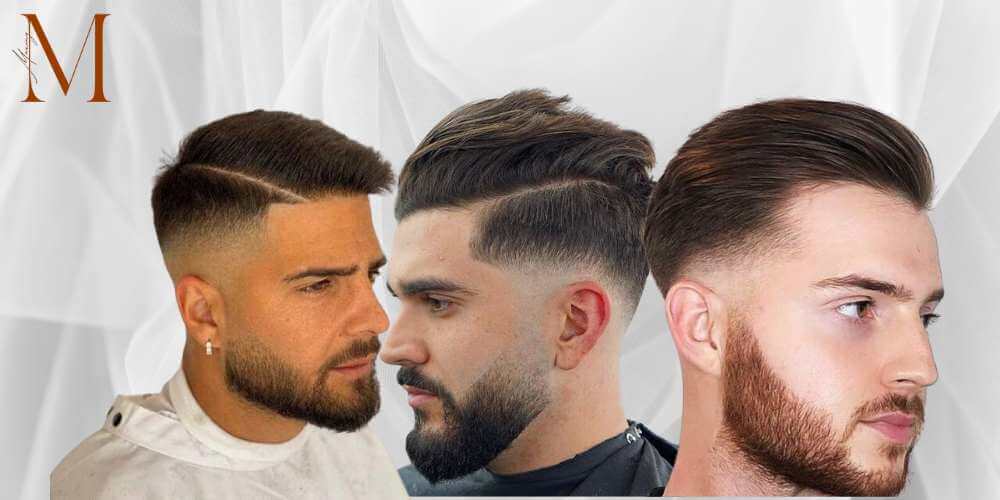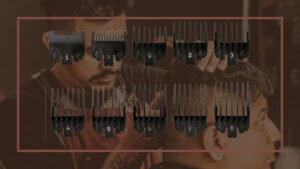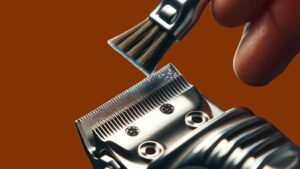
What Is A Zero Fade Haircut: Explained With Photos
What is a zero fade haircut, and how does it set itself apart from other fade styles? When you get deeper into the world of hairstyles, curiosity naturally takes over, you start exploring what is a mid fade, then you find out there are so many types of fades, so you find a zero fade.
When it comes to zero fades, the key is to be clear about what you want. There’s nothing more frustrating than requesting a particular fade and ending up with a result you didn’t anticipate.
Now, let’s dive into the details of a very popular style, the zero fade. Let’s get started!
What Is A Zero Fade Haircut?

A zero fade haircut starts super short at the sides, like stubble, it then gradually gets longer as it goes up. It’s a bit longer than a skin fade and doesn’t require a razor.
To do it, you use a clipper without a guard to make the stubble at the bottom. The stubble length is usually between 0.5mm to 0.8mm, depending on your clipper. You can adjust it slightly with the clipper’s lever.
Then, you use the clipper to make the hair gradually longer as you move up from the bottom, creating a fading effect with no harsh lines. Zero fades can be “low,” “mid,” or “high,” depending on how high up the short part goes before blending into longer hair.
Now let’s explore the difference between Low, Mid and High Zero Fades.
Zero Fade Haircuts: Low, Mid And High
| Type of Zero Fade | Description | Characteristics |
| Low Zero Fade | – Shortest length (#0, 0.5mm – 0.8mm) at the bottom of the sides – Gradually blends into longer lengths about half an inch above the ear – Sits low on the sides and back. | – Subtle and not very noticeable – Ideal for those who want a short fade without it being prominent – Can be considered a less attention-grabbing option |
| Mid Zero Fade | – Shortest length (#0, 0.5mm – 0.8mm) at the bottom of the sides – Gradually transitions to longer lengths approximately one inch above the ear, usually blending halfway up the sides | – Height depends on head size; a general guide is “one inch above the ear” – About half of the sides and back are very short, resembling stubble – Attention-grabbing and eye-catching, more so than low zero fades< – Allows for gradual transition into various longer lengths higher up |
| High Zero Fade | – Shortest length (#0, 0.5mm – 0.8mm) at the bottom of the sides and back – Transition and blend into longer lengths around the level of the temples | – Positioned high on the sides and back, nearly reaching “high and tight” territory – Very noticeable due to the extremely short stubble at the start of the fade – Makes a bold statement and stands out significantly – May not be recommended for those new to fades – Gradual blending into longer lengths before reaching the top hair |
Low Zero Fade

A low zero fade is a subtle style where the really short part (0.5mm – 0.8mm) starts blending into longer hair just half an inch above the ear. It’s not as noticeable as mid or high fades.
This style is great for guys who want a short fade but don’t want it to stand out too much.
A “zero taper fade” is even more subtle, with a short section that transitions into longer hair around the top of the flap, making it the most discreet type of zero fade.
Mid Zero Fade

A mid zero fade is when the really short part (0.5mm – 0.8mm) at the sides starts to blend into longer hair about an inch above the ear. It usually happens halfway up the sides, but it can vary depending on head size. About half of the sides and back are super short like stubble, though not as short as a skin fade.
Mid zero fades are attention-grabbing and not as subtle as low zero fades or zero fade tapers. You can make the short part gradually get longer, like #1, #2, #3, or more. The bigger the difference between the short part at the bottom and the longer part higher up, the more noticeable it is.
High Zero Fade

A high zero fade is when the sides and back are cut really short (0.5mm – 0.8mm), and it starts blending into longer hair near the temples. It’s one of the highest fades you can get without going into “high and tight” territory.
High zero fades are eye-catching because the short part is like very short stubble. It’s noticeable because you’re going from super short to longer hair near the temples. This bold look is great for making a statement.
But if it’s your first time trying a fade, it’s better to start with a lower or longer fade, like a high #2 fade. You can work your way up to a high zero fade later if you like the style.
Frequently Asked Questions
A zero fade is distinguished by the fact that it starts at the shortest possible length, which is often referred to as “zero” or “bald” because it leaves minimal stubble. In contrast, a regular fade typically starts with a slightly longer length and gradually tapers down to a shorter length.
The choice of height depends on your personal preference and the overall look you want to achieve. Low fades are more subtle, mid fades are attention-grabbing, and high fades are bold and dramatic.
Absolutely. Zero fades offer flexibility in terms of the length of the longer hair on top. You can choose to transition into longer lengths like a #1, #2, #3, or even longer, depending on your desired style.
To maintain a zero fade, you’ll need regular visits to your barber or hairstylist for touch-ups. You can also learn to trim and maintain it at home if you have the right clippers and skills. Keeping the fade fresh is key to a polished look!
Conclusion
And that’s it!
If you like how it looks, you can easily ask your barber for one the next time you visit. Knowing what it is will help you feel more comfortable about it when you enter a barber shop and ask for a ‘fade’ haircut. Have a great time getting your new haircut!
Related Articles:


